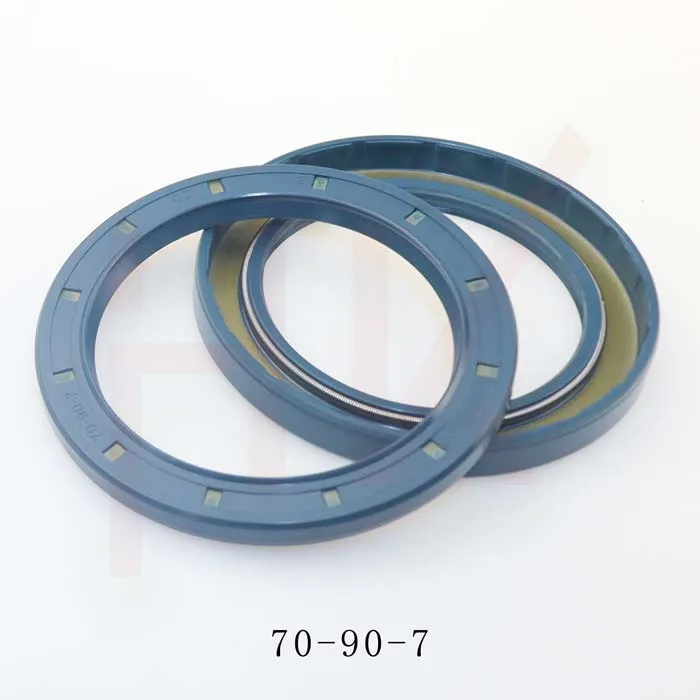stu . 12, 2024 23:35 Back to list
hub grease seal
Understanding Hub Grease Seals Maintenance and Importance
Hub grease seals are crucial components in the wheel assembly of vehicles and machinery, specifically designed to keep lubrication contained within the hub while preventing contaminants from entering. Understanding the function and maintenance of grease seals is essential for anyone involved in automotive repair or machinery upkeep, as it directly impacts the longevity and efficiency of the equipment.
What is a Hub Grease Seal?
A hub grease seal acts as a barrier between the inner workings of a hub assembly—where grease keeps the bearings lubricated—and the outside environment. These seals are typically made from durable materials such as rubber or silicone, providing an effective shield against water, dirt, and dust. The primary function of a grease seal is to create a closed system where lubrication can adequately protect the bearings and facilitate smooth movement without contamination.
Why Are Hub Grease Seals Important?
The importance of hub grease seals cannot be overstated. A properly functioning seal prevents grease from leaking out, which is vital for maintaining adequate lubrication. If lubricant escapes, the bearings can become dry and susceptible to wearing out or failing prematurely. Additionally, if contaminants enter the hub assembly, they can cause significant damage, leading to increased friction, overheating, and eventual breakdown of the bearings.
Furthermore, grease seals play a significant role in enhancing the overall performance of the vehicle or machinery. Vehicles with functioning grease seals operate more efficiently, as the wheels can rotate freely without undue friction. This efficiency not only helps in improving fuel economy but also ensures a smoother transportation experience.
Maintenance of Hub Grease Seals
hub grease seal

To ensure the longevity and efficiency of hub grease seals, regular maintenance is necessary. Here are some essential steps to consider
1. Routine Inspections Regularly check the condition of the grease seals during routine maintenance. Look for signs of wear, cracking, or failure. Any visible damage may require replacement.
2. Check Lubrication Levels Ensure that the hub is correctly lubricated. Overfilling or underfilling can put undue pressure on the seal, leading to leaks.
3. Replacement When Necessary If you notice any signs of leakage or wear, replace the grease seal immediately. Continuing to use a vehicle or machine with a damaged seal can result in severe damage to the bearings and hub assembly.
4. Use High-Quality Grease Use the recommended type of grease for your specific application. Different seals may require different types of grease, and using the wrong type can lead to seal degradation.
5. Monitor Operating Conditions Be mindful of the conditions in which the vehicle or machinery operates. High levels of dust, humidity, or water exposure can increase wear and require more frequent inspections.
Conclusion
Hub grease seals are a vital component that plays an essential role in the smooth operation of vehicles and machinery. Regular maintenance, including inspections and timely replacement, is crucial for ensuring the longevity of grease seals and the overall performance of the equipment. By understanding the importance of these seals and taking proper care of them, operators can significantly enhance the reliability and efficiency of their vehicles or machinery, preventing costly repairs and downtime in the process.
-
The Trans-formative Journey of Wheel Hub Oil Seals
NewsJun.06,2025
-
Graphene-Enhanced Oil Seals: Revolutionizing High-Pressure Oil Sealing
NewsJun.06,2025
-
Future of Hydraulic Sealing: Advanced Intelligent TCN Oil Seals
NewsJun.06,2025
-
Don’t Let a Broken TCV Oil Seal Ruin Your Day
NewsJun.06,2025
-
Bio-Inspired Dust Seals for Better Sealing Performance
NewsJun.06,2025
-
Biodegradable and Sustainable Hydraulic Seal Materials
NewsJun.06,2025
-
Top Oil Seal Solutions for Your Industrial Needs
NewsMay.22,2025
Products categories
















